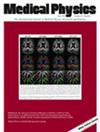Container applications for the development and integration of virtual imaging platforms
Abstract
Background
Virtual imaging trials (VIT) have made significant advancements through the development of realistic human anatomy models, scanner-specific simulations, and virtual image interpretation. To promote VIT widespread adoption in the medical imaging community, it is important to develop methods that unify and facilitate the use of VITs, ensuring their reliable application across various imaging studies.
Purpose
We developed a containerized environment to enhance collaboration and interoperability across VIT platforms. This environment integrates key components of two well-established breast imaging platforms (OpenVCT and VICTRE), enabling direct comparison between specific modules for simulating anthropomorphic phantoms, lesions, and x-ray images.
Methods
Wrappers were developed to simplify the setup and execution of OpenVCT and VICTRE platforms and ensure compatibility and interoperability across different software components. These wrappers can streamline the installation of necessary packages, data formatting, and pipeline execution. The containerized environment was built using Docker images to provide resources for cross-platform integration. The breast anatomy generated by VICTRE was augmented using a simplex-based method from OpenVCT, providing additional texture modeling of breast parenchyma. Power spectra (PS) were calculated to assess the texture complexity of the simulated breast tissue and compare the outcomes. Lesion simulations were performed using breast models with calcifications and masses, allowing for a comparison of Monte Carlo (VICTRE) and raytracing (OpenVCT) imaging techniques. Key differences in x-ray attenuation models and image reconstruction methods were analyzed to evaluate the differences in the reconstructed images and overall image quality.
Results
The containerized approach simplified the setup and execution of the simulation platforms, embedding all the necessary packages and dependencies into the Docker images. These containerized environments supported the simulation of anthropomorphic breast models and x-ray images using both Monte Carlo (VICTRE) and raytracing (OpenVCT) methods. The breast images generated using the conventional VICTRE and the integrated simplex-based method from OpenVCT were visually comparable. The estimates from the PS for both approaches were close to 3, as expected for mammographic images, with only minor differences observed in the high-frequency components of the spectra (a difference of 0.2). These differences were particularly evident in areas of high tissue density and the regions of interest containing lesions; variations in the acquisition geometry affected the lesion visualization, demonstrating slight differences in the MC and raytracing simulations. Despite these differences, the overall performance of both methods in simulating images was similar, and the integrated environment provided a robust platform for comparing and optimizing imaging simulations.
Conclusions
Containerized environments enable cross-platform comparisons and hybrid approaches. In this work, Docker images provided all the resources to simulate and compare the outcomes in breast phantom and x-ray image simulations, ensuring their robustness and reproducibility. The integration of VICTRE and OpenVCT methods allowed for data augmentation and provided resources for selection of imaging methods. The work lays a foundation for future VIT advancements, ensuring that these resources remain credible, reproducible, and accessible to the research community.


 求助内容:
求助内容: 应助结果提醒方式:
应助结果提醒方式:


